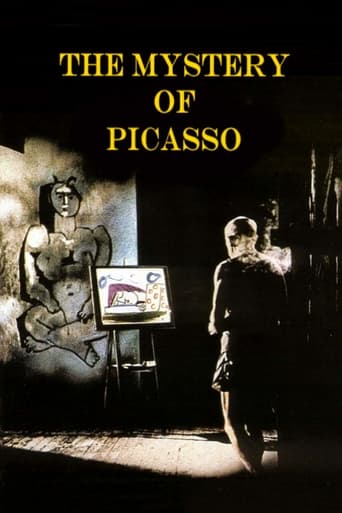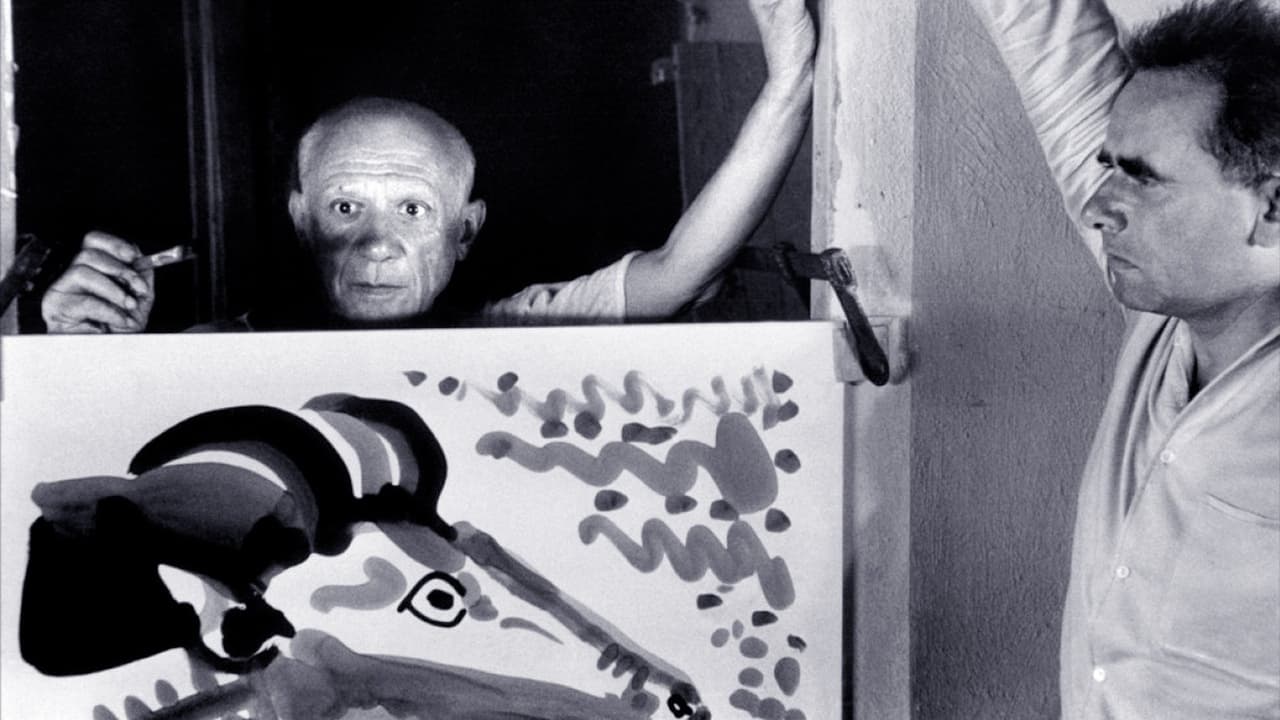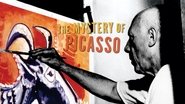celebes
This is a fascinating film, giving the viewer some insight into the creative process of one of the giants of 20th century art. The filmmaker uses some special equipment and time lapse photography to show the evolution of about 20 drawings and paintings that Picasso made for this film in 1956, when he was 75. Although Picasso is in the film, we don't actually see him during the painting process. The paintings fill the entire frame and the brush strokes appear one stroke at a time, giving the feel of a magical children's animated film.After some quick drawings with decidedly mixed results in which Picasso draws on the back of a light box ( We can see the colors change as the paint dries), Picasso tells the filmmaker he wants to replicate his actual painting process more accurately with oil paint.The film technique switches here to time lapse photography, and what astounded me is how many revisions, obliterations and over paintings Picasso did. I had an image of him in my mind as a sure-handed artist who rarely reworked paintings- a supremely confident virtuoso. However he repaints parts of some of these paintings literally dozens of times. Different sections of the paintings are constantly morphing from one style to another. He often uses white to go back in and change the drawing.In this respect, he is much closer to an artist like deKooning than I thought, constantly painting over entire sections and using white to define his line. A major difference was that deKooning left far more evidence of the struggle than Picasso. Interestingly, deKooning was near the height of his fame when this film was made. Picasso's greatest works, of course, were done 40 and 50 years before this film.What we see here is an artist for whom the act of painting is enough, who is no longer in the avant garde, but who still struggles with the creative process. For artists of a certain age, for whom Picasso was a towering presence to be reckoned with, this film demystifies him, revealing an artist of mortal limitations. But also an artist of great courage and freedom.
nikhil7179
Peter Greenaway was right. A work of art is never finished, only stopped.Mystery of Picasso is an incredible film that unveils the painter's ingenious techniques and is just as suspenseful and intriguing as anything else Clouzot ever did.The greatest art form of the 20th century records the greatest artist of the 20th century. Only Cinema could breathe this kind of life into the work of the master.Picasso attacks the canvas like a man possessed, tapping an infinite reservoir of imagination and creativity.He reworks and reinvents his paintings over and over again. The stop-motion techniques find perfect expression here and make the film seem less like live-action and more like a work of animation. Picasso's canvases are transformed into organic living creatures - in a constant state of metamorphosis and evolution.The best part about having this on DVD is the option of the viewer in deciding when enough is enough. All you have to do is hit the pause button and admire the masterpiece before you.The film is a perfect synthesis of an artist and a filmmaker - both at the height of their creative powers.
hoytjsmith
This film is as visually pleasing as it is intellectually stimulating. Much as time-lapse photography reveals in seconds the weeks-long emergence, growth and blooming of a sprout into a flower, "The Mystery of Picasso" reveals the growth and evolution of several paintings. Each stage of each creation is a painting unto itself. To watch this film is quite literally to browse a metaphorical gallery of progressively different compositions. Quite often, the viewer may feel that Picasso has gone too far; that he should have rested his paint brush and walked away earlier than he did. Of course that comprises the intellectual weight of the film. When is an artist done? It is a question that writers, poets, painters, even film makers ponder. Imagine reading alternative, unpublished chapters of Gabriel Garcia Marquez; or imagine watching several varying, unedited director's cuts of a Luis Bunuel film. Henri-Georges Clouzot leaves his audience with an incredible appreciation for the dynamic, living, breathing process that goes into each Picasso canvas. Clouzot adds drama toward the end by informing Picasso that his film is running out. Is it really? The maestro doesn't seem to be rushed. Either that or he performs remarkably well under pressure.
Claudio Carvalho
Henri-Georges Clouzot, the French director of the masterpieces "Les Diaboliques" and "Le Salaire de la Peur" convinced his friend Pablo Picasso to make this documentary, painting twenty paints in front of the cameras. Using some special technique, Clouzot filmed from the other side of the canvas or stop-motion, and the result is this movie, where two geniuses are gathered: one behind and the other in front of the camera. In accordance with the information on the DVD, the canvases have been destroyed in the end of the shootings. Further, in 1984, the French government declared this documentary a national treasure. Clouzot and Picasso deserved this beautiful homage. My vote is eight.Title (Brazil): "O Mistério de Picasso" ("The Mystery of Picasso")


 AD
AD




